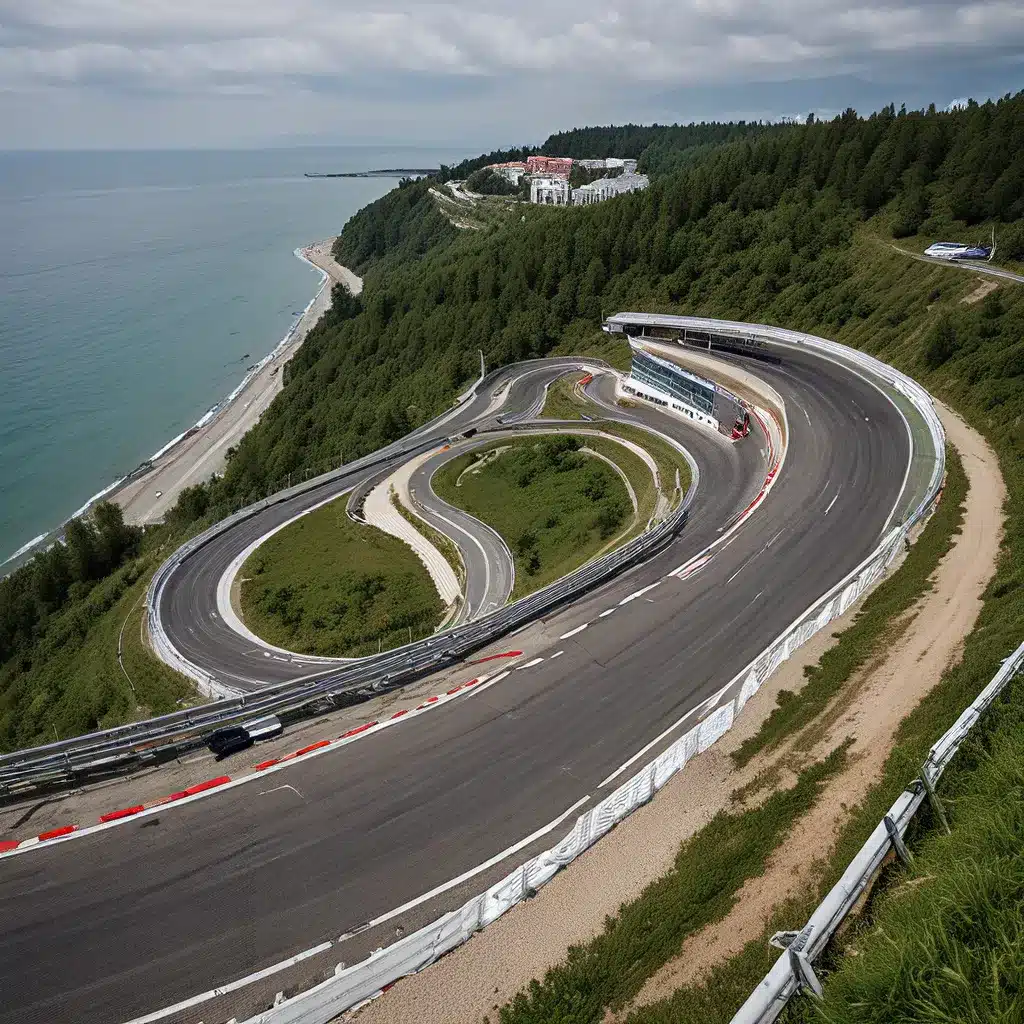
The Sochi Autodrom’s Storied History
The Sochi Autodrom, also known as the Sochi Olympic Park Circuit, is a Formula One racetrack located in Sochi, Russia. Nestled along the stunning Black Sea coast, this circuit has become a fixture on the Formula One calendar since its inaugural race in 2014. The track’s unique layout and picturesque setting have made it a favorite among drivers and fans alike, though it has not been without its share of controversy and challenges.
The construction of the Sochi Autodrom was a monumental undertaking, as it was part of the larger effort to transform the resort town of Sochi into a world-class sporting destination for the 2014 Winter Olympics. The Russian government poured an astronomical $39 billion into the project, making it the most expensive Olympics ever held, far surpassing the $28 billion spent on the 2008 Beijing Olympics. A significant portion of this budget went towards the construction of nearly a dozen new venues, including the Sochi Autodrom.
Business Insider reports that Sochi was a resort town before it won the right to host the games, and the government had to essentially build the Olympic venues from scratch, with the mountain-based facilities being particularly impressive, while others were “a little bland.”
The Sochi Autodrom itself is a 5.853-kilometer circuit that winds its way through the coastal resort town, featuring a unique combination of long straights and tight, technical corners. The track’s layout was designed by renowned circuit architect Hermann Tilke, who has been responsible for the design of numerous Formula One circuits around the world.
The Sochi Autodrom’s Distinctive Layout
The Sochi Autodrom’s layout is particularly noteworthy for its long straights and tight, technical corners, which present a unique challenge for drivers and teams. The circuit features 19 turns in total, with several of them being particularly tight and demanding, requiring precise driving and excellent car setup.
One of the most iconic features of the Sochi Autodrom is the long, sweeping turn 3, which is often referred to as the “Sochi Carousel.” This corner is a 180-degree right-hander that requires drivers to maintain a high level of speed and precision to navigate it successfully. The Sochi Carousel is followed by a long, straight section that leads into another series of tight corners, testing the drivers’ ability to manage their tires and brakes.
Another noteworthy section of the circuit is the high-speed first sector, which features a series of long, fast-flowing corners that require drivers to be both aggressive and disciplined in their approach. The long straights throughout the circuit also provide opportunities for drivers to overtake, adding to the excitement and unpredictability of the race.
Challenging Conditions and Controversy
The Sochi Autodrom has faced its share of challenges and controversies since its inception. One of the primary concerns has been the track’s layout, which some have criticized as being too narrow and lacking in overtaking opportunities. The long straights and tight corners can make it difficult for drivers to pass, leading to processional races and a perceived lack of excitement.
Additionally, the weather conditions in Sochi can be a factor, with the subtropical climate often producing high temperatures and the potential for rain. These conditions can add an extra layer of complexity to the drivers’ strategies, as they must carefully manage their tires and brakes to maintain optimal performance.
Some have criticized the Russian Grand Prix and suggested that it should be removed from the Formula One calendar, citing issues such as the track’s layout and the broader political and social climate in Russia. However, others have argued that the race provides a unique challenge and has produced some exciting moments, such as in 2017 and 2018, when the race was praised for its “good races.”
The Future of the Sochi Autodrom
Despite the controversies and challenges, the Sochi Autodrom has become an integral part of the Formula One calendar, and its future remains uncertain. The 2022 Russian Grand Prix was canceled due to the ongoing political tensions between Russia and Ukraine, and it remains to be seen whether the race will return in the coming years.
However, the construction of the Sochi Autodrom has had a significant impact on the local economy and infrastructure, and the Russian government has expressed a strong desire to continue hosting the event. Additionally, the track’s unique layout and picturesque setting have made it a favorite among some drivers and fans, who appreciate the challenge it presents.
As the world of Formula One continues to evolve, the Sochi Autodrom’s place in the sport’s future remains a topic of ongoing discussion and debate. Whether it will continue to be a fixture on the calendar or be replaced by a new and exciting circuit remains to be seen. One thing is certain, however: the Sochi Autodrom’s story is far from over, and its legacy will continue to shape the sport for years to come.
Exploring the Old Stadium Journey
For those interested in delving deeper into the world of sports stadiums and circuits, the Old Stadium Journey website offers a wealth of information and insights. From exploring the architectural design and historical significance of iconic venues to discovering hidden gems off the beaten path, this platform provides a comprehensive and engaging exploration of the rich tapestry of sports stadiums around the globe.
